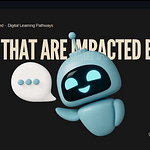💡 Entry-Level Job Tip #1: You’ll Have to Put in Work
I know. I know. I know.
But if you're new to the job market or starting over, you need to relearn and rebuild your confidence, mindset, and approach. One way to do that? Join workshops that teach:
Adaptability
Collaboration
Communication
Digital professionalism
These soft skills matter more than people think. Why? Because…
😬 You Don’t Want to Rub People the Wrong Way
Have you ever worked with someone who made you feel uncomfortable? Rubbed you the wrong way? That stuff sticks — and in a professional setting, it can cost you opportunities.
You want people to feel good about working with you. You want to be known as someone who brings good energy. If you’re constantly taking things personally or creating tension, people will avoid working with you. And employers won’t even think twice about passing you up.
Learn how to read the room, stay professional, and not take everything to heart.
💼 Build Transferable Skills (And Actually Understand What They Are)
I’m going to do another video just on this because it’s THAT important.
Here’s what I recommend:
Instead of asking AI,
“I used to be a retail manager. Now I want to be a UX designer. What are my transferable skills?”
Start with:
What’s your actual role?
What do you do day-to-day?
What do they pay you for vs. what you actually do?
What do you enjoy? What do you hate?
How do you prep and manage your responsibilities?
Write it all down or record yourself talking it out. I do this myself — I record, get the transcript, then feed it into AI.
Then ask:
“Based on what I just told you, what are my transferable skills?”
It works. And it helps you see your value in a whole new way.
🧠 Train-to-Hire Programs = Built-in Experience + Employer Network
If you’re just starting out, don’t just look for training programs.
Look for training programs that are connected to actual employers — programs that pay you to train and then hire you after.
Some examples:
Apprenticeships: Learn while working.
Internship-to-job paths: Like i.c. stars — they train you and connect you to opportunity (though you're not guaranteed a job with them after).
Look for train-to-hire models, where the company training you is the same one that brings you into their workforce. It’s a smoother transition, and you leave with experience that companies actually want.
Because let’s be honest — a lot of employers still want “2–3 years of experience.” These programs help you get it.
😤 What’s Really Going On in Workforce Development?
Here’s what most people don’t know:
It’s not just individuals struggling to get jobs.
Workforce training programs are struggling to get their people hired, too.
As an organization, you have to build relationships with employers — Walmart, Target, Accenture, whoever — and say, “Can you hire 2 or 3 of our grads?” That’s how it works.
Some employers are now saying:
“You have to pay me to look at your people.”
😳 Yes. That’s a real thing that’s happening. And it’s wrong.
So if you’re job hunting, get into programs that already have relationships with employers.
But don’t rely on them alone. It’s getting harder out here.
There are whispers of “20,000 open jobs in Chicago.”
But where are they? Who knows. No one seems to know.
🧩 We Need Personalized Training Paths
To my employment service centers and nonprofits: We need integrated, personalized training paths.
There’s a big disconnect between what skills people have and what skills the job actually requires.
So again — use AI.
Give it a prompt like:
“Here’s the job I have now. Here are the skills I use. Here’s what I want to do. What training do I need to close that gap?”
And yes, I’m working on templates for this so folks don’t have to figure it out from scratch.
Final Thoughts
Things are hard right now — for workers, for programs, for everyone.
But there are people on the ground making real efforts to get folks hired, trained, and ready. There’s more happening than you think. We just have to get the word out.
You’re not alone in this.
Let’s build the path together. 💪🏾












Share this post